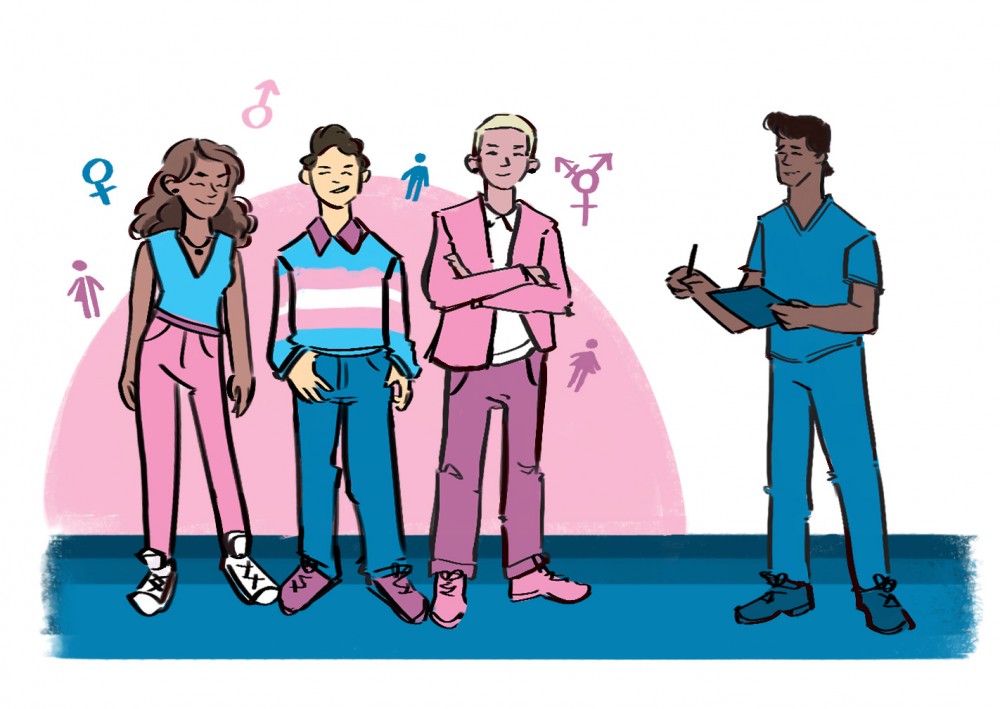Students at the University of Minnesota School of Nursing will participate in a new transgender patient simulation this fall to learn how to better care for transgender patients.
The simulation will take place this month and will teach students how care can be different for transgender or nonbinary patients. The teachers, who will be transgender or nonbinary people themselves, will take on the role of the patient and assessed by students. Members of the nursing school say this will allow students to learn things that many medical professionals today do not know.
Melissa Avery, a professor in the nursing school and one of the simulation’s creators, said students will learn how to address each patient, refer to their body parts and be respectful while asking questions. In the simulation setting, students will work in groups and get immediate feedback from the teachers, she said.
This simulation is funded by a $1,000 grant from the University’s Institute for Diversity, Equity, and Advocacy.
“Our job as educators and professionals is providing high quality care to everyone who needs healthcare,” Avery said. “We’re on a learning curve, our students are on a learning curve. Our goal is to broaden their education and get a little further.”
Avery said she was surprised by how enthusiastic the students were about taking part in the simulation.
“Our students are so happy to be getting this content and wanting to know more,” she said.
The simulation is necessary because of downfalls in professional care everywhere for transgender people, Avery said. Avery and her partner on this project, Maria Ruud, a clinical assistant professor at the University, agree that much of the mistreatment transgender patients get in medical settings comes down to a lack of education.
“People just don’t know how to take care of them,” Avery said.
While care for transgender and nonbinary patients has improved over the last 20 years, patients still face problems, Ruud said.
“We are really a heteronormative society and healthcare is really heteronormative. There’s that assumption,” she said.
Jennifer Demma, clinical practice director at the Family Tree Clinic in St. Paul, has worked closely with Ruud and Avery on this simulation, including providing the patient teachers and writing the scenarios with them. Family Tree Clinic cares for many LGBTQ patients in the Twin Cities area.
Demma, who spends half her time in an administrative role and half as a midwife, cares for her own transgender patients, some of whom come from around the country.
“People travel from seven different states to receive care from our clinic,” she said.
Family Tree is restricted by the number of staff it has and sometimes has to connect patients elsewhere, Demma said.
“The idea is not just limiting this to midwifery and nurse practitioner students, that it’s imperative for medical students,” she said.
Mikki Coleman, one of the patient teachers and a medical assistant at Family Tree Clinic, joined the simulation because of the need for simulations like this.
“The system isn’t really built to understand our bodies,” they said.
Being a part of the simulation and getting paid for it, they said, is important because in medical settings the patient often has to inform the provider of how to treat them or speak to them.
“It’s putting trans people in a place of power where we can determine how we’re being cared for in a medical setting and our providers are properly educated,” Coleman said.
Another patient teacher, Kaija Tan, was recruited for the simulation by an Instagram post asking for volunteers.
“Reading the case files, I think they’re a good enough representation, at least for beginning learners,” they said. “Without it, people wouldn’t really learn about trans people and how to take care of trans people, especially in the healthcare setting,” Tan said.
Haruka Yukioka, the University’s Queer Student Cultural Center outreach manager, said they liked the example the simulation set.
“I was really impressed with the fact that they talked about bringing in folks from the [LGBTQ] community,” they said.
It’s important for transgender and nonbinary people to receive gender-affirming care from other transgender and nonbinary people, Yukioka said.
Yukioka also had suggestions for making a transgender patient comfortable, such as including pronouns in their email signature or asking what the patient’s preferred name is.
“That’s usually a sign that the provider is willing to listen to the patient,” they said.








